Fabrics designed and produced in Africa have a recognizable style, an aesthetic all their own. They use bright bold graphic patterns, often bordered or outlined in black. For fabric collage, African fabrics provide unique opportunities and challenges—a challenge (in more ways than one) that Shannon Maxwell readily embraced with her “African Guinea Hen,” detail above. More about Shannon’s collage story and other Finish Line quilts using African fabric further in the post.
For my own art, I’ve long posed challenges to myself to learn what more I can do with fabric collage—what boundaries can I push—and I was up for a new challenge when I said yes to the opportunity to participate as a speaker at the annual Quilt Africa Online Summit, July 6-8, 2022.
When a plump package of fabrics arrived from Miriam Galadima-Benson of Quilt Africa Fabrics last week, I laid them out (see photos below) and was inspired to add these fabrics to my Summit lecture. In that talk I’ll show in-progress work and a demo using these particular fabrics, in addition to discussing selected finished quilts where I’ve used African fabrics in the past.
With the inspiration of this new palette of fabrics, new things have been happening in my studio and I’m excited to share them at the Summit in a couple weeks. I’ll have a preview ready to show you in next week’s post, but for now, please feast on the photos above and below—various sized cuts and bundles directly from Quilt Africa Fabrics. Click here to see more fabrics in Miriam’s shop!
Please note that the following post was originally written for the 2022 Quilt Africa Online Summit, but has been edited to reflect links to information for this year’s Quilt Africa International Summit—July 5-8, 2023:
In today’s Finish Line blog post, I’d like to share—and re-share—a few quilts from blog readers and students who have used African fabrics in their fabric collages.
A reminder that all photos can be clicked on to show them larger.
Shannon Maxwell
Shannon Maxwell of Appling Georgia—though usually in Niger, West Africa—used the bright and bold prints of African fabrics to her full advantage when creating her lovely and sweet guinea hen. I think that many collage quilters, at first glance, would consider the colors and patterns of traditional African fabrics as too strong in contrast to readily work in the “blending” of a fabric collage image.
Obviously, Shannon saw right past that and found prints that worked perfectly for the spotted feathers and even the varied visual textures of a fowl’s crest and wattle. A bit of bold print made it into the background sky as well, giving it motion and interest. And for those of you looking close for the (nonexistent) quilting, Shannon has finished her collage with an application of Mod-Podge onto canvas. A great way to finish an art collage.
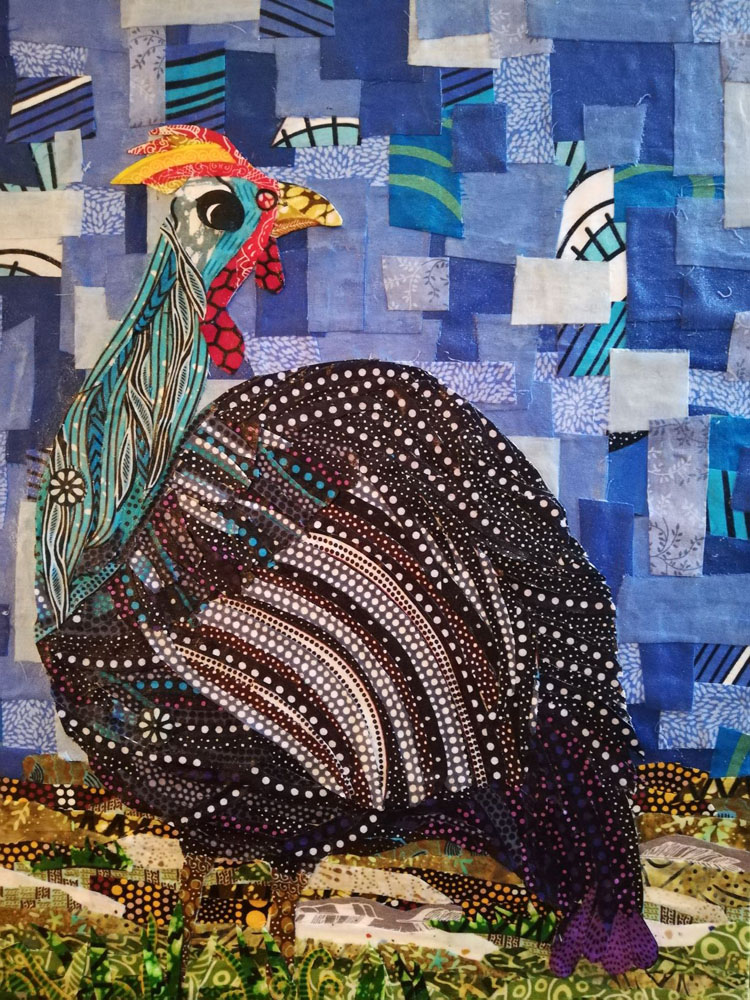
From Shannon:
I have been following Susan for some time as I teach a Fabric Art and Design Class (FAD Class) at an international school in Niger. I have followed your blog and also purchased the Serendipity Quilt book. I have played with small pieces in my class to have students learn about the color wheel, but this is the first time I took the challenge (thanks to the summer blog challenge) and made a larger size piece.
I love the fabrics of West Africa and brought several back to the US when we came back due to COVID. I have made quilts and art pieces with the fabric, and really wanted to try the collage technique. I thought a guinea fowl would be fun as it is very well known in Africa and I realized I had lots of fabrics with dots. I hand drew my picture on to muslin fabric and then started working. You can see from the steps that I may have changed my mind a couple of times and changed his shape a bit as well, once it was completed. I wanted to keep it simple and not to be totally “realistic”.
As I finished it I wanted to try the patch work background idea but chose to not make it a sewn piece. I used a canvas that I had on hand that the hen fit on. I glued my background to the canvas then glued my hen to the back ground. To finish I used Mod-Podge over the whole piece allowing some of the hen feathers to stick up (this may not be obvious in the photos).
This was super fun! and am ready to make another one. Thank you for the encouragement to try it last summer. It was a perfect project as I wait to return to Niger and buy some more fabric.
Linda Baar
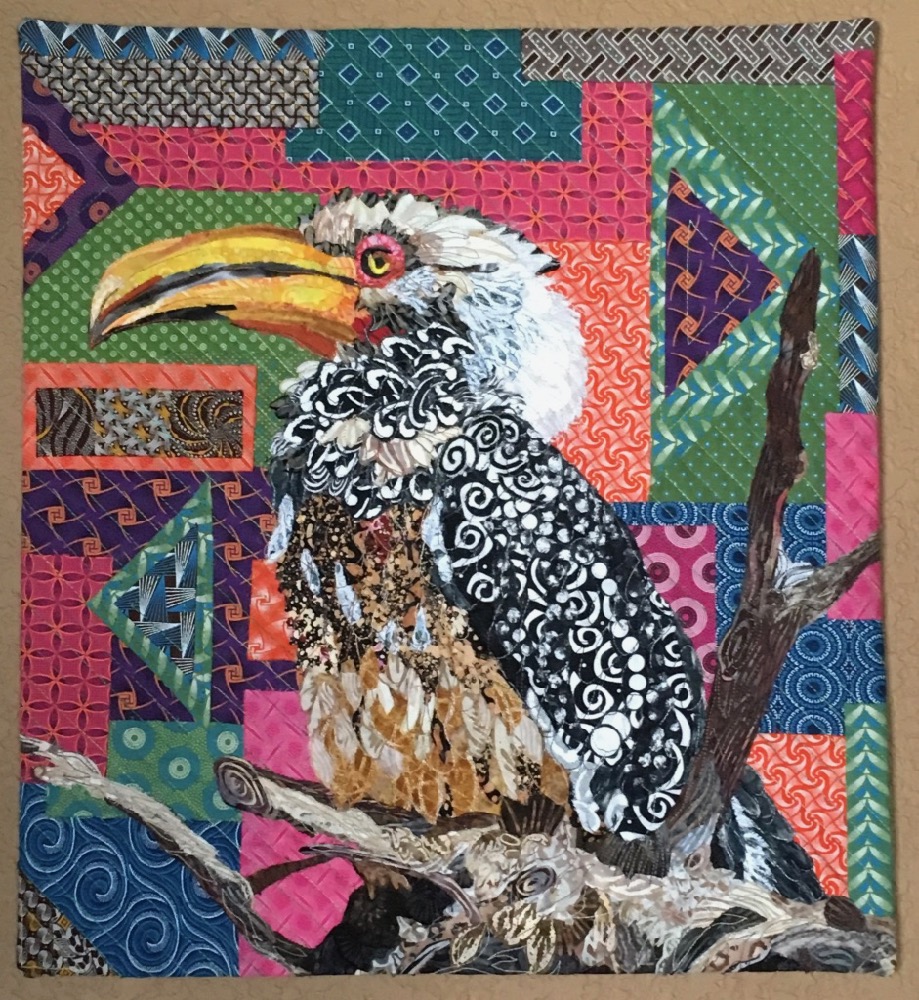
Linda Baar has been in a couple of my classes over the years. Her second collage is since finished, a yellow-billed hornbill. I remember talking to Linda about different background possibilities. Nothing was clicking, so finally I asked her to tell me about her time living in Botswana. She excitedly told me about a type of cotton print specific to that area, shweshwe, and that she had brought some back with her. The next day, Linda brought pieces in to show me, and they were gorgeous, and perfect for her African bird.
Linda had lived in Africa for awhile and it seems so exotic to me to be able to see birds like this on a local outing. When I asked Linda about choosing this image and her background fabric, she wrote:
While my husband and I were living in Botswana, Africa for 4-1/2 years, we had the privilege of going on many game drives at various safari camps. We would frequently see yellow-billed hornbills, better known as Zazu to Lion King fans. I was always amazed at how they could fly with such a large beak. I photographed this particular bird sitting on a tree branch on one of our bush outings.
The background is made from pieces of shweshwe which is a 100% cotton fabric manufactured in South Africa. Local ladies wear garments made from this very colorful fabric. Thanks to Susan for suggesting I use this fabric to complete the story of my life in Southern Africa.
When choosing fabric for images, I think it’s interesting to find prints that suggest a visual texture—such as the high-contrast black and white feathers of this hornbill—rather than painstakingly creating each feather. For Linda’s bird, the large graphic black and white spirals, achieved a similar look to the pattern on the wing feathers.
Nancy Blake

Originally published in: The Finish Line: Completed Student Work Volume 6—April 29, 2017
I first met Nancy Blake at the first class I ever taught at Woodland Ridge Retreat Center in Downsville, WI. I’ve had the pleasure of spending much more time with her since then (including twice this year already!) and she has become a dear friend. This portrait of Chunk, her grand-dog, was the first collage quilt Nancy created, begun at the retreat in September, 2015.
When we met up a year later, the quilt was finished and we reminisced about how much trial and error was involved to find a good background for Chunk’s vivid portrait. But he really seemed to pop with the African printed cloth—which had been for sale right there at the retreat center—a very serendipitous find.
Chunk is Nancy’s son’s adorable (and well-behaved) Boston terrier. His wonderfully colorful portrait is based on a photo of him dressed for the occasion and sitting at the table with his people at a dog-friendly restaurant. My own pups were very jealous of that sort of dining opportunity.
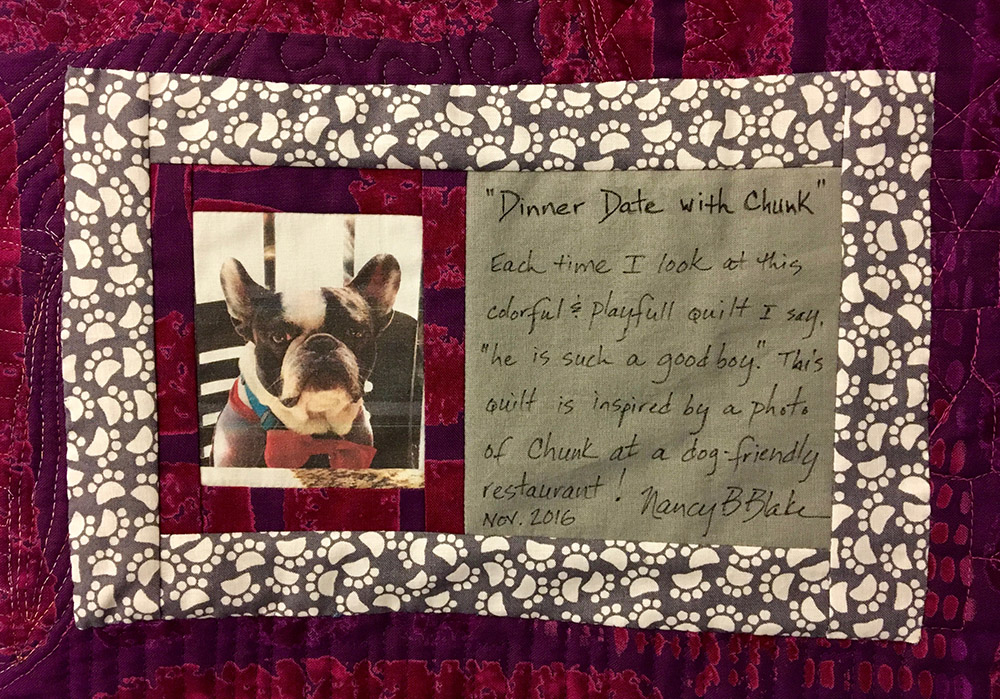
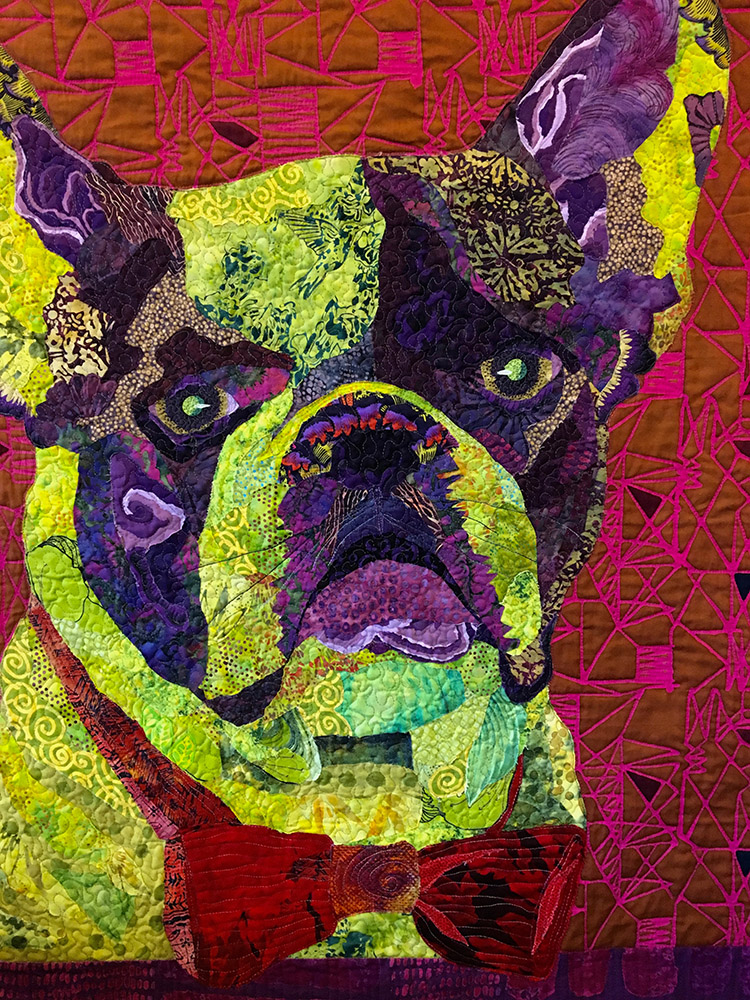
Catherine Bilyard
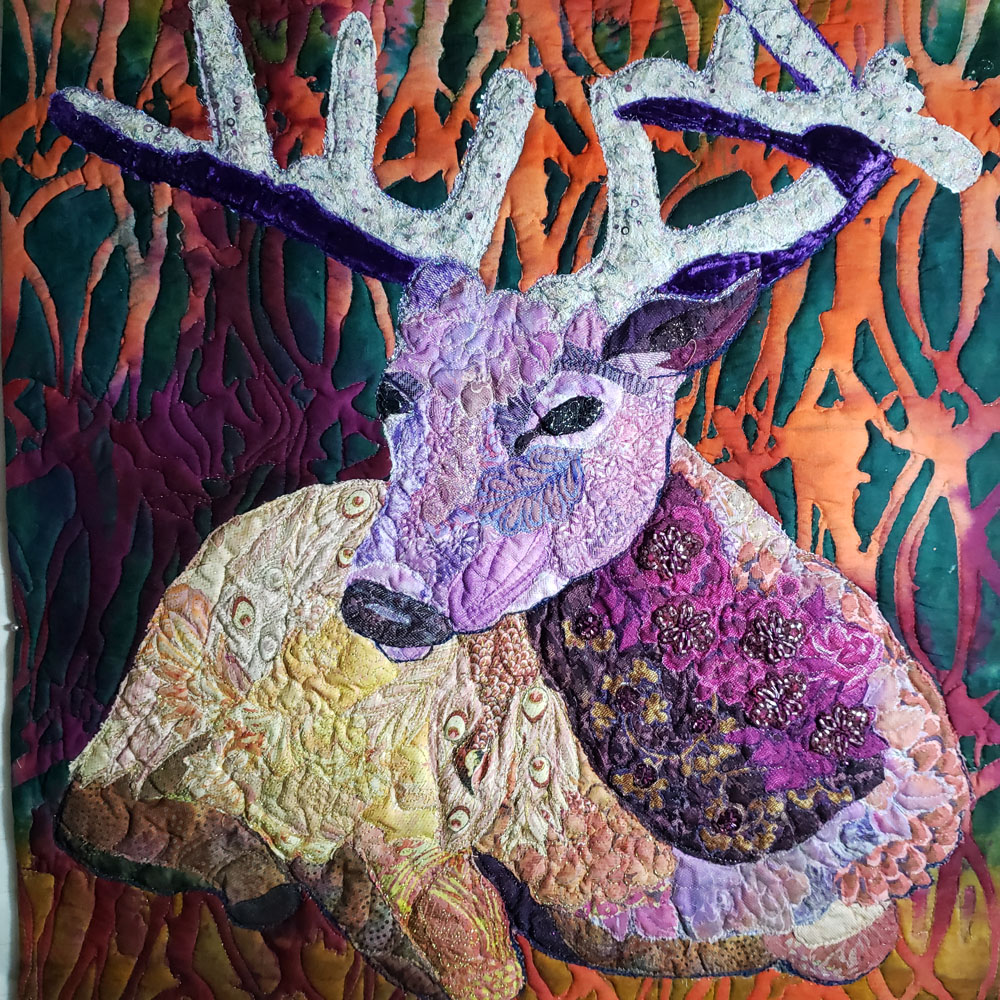
Originally published in: Fabric Collage Finish Line No. 74—December 18, 2021
I met Catherine Bilyard of Hayden, ID, in a Sequim, WA class, September, 2019. Catherine got quite far on her collage during those class days, and it’s fun to now see it finished. She made great use of the patterns in her colorful fabrics, using them as visual texture for the deer’s fur and an indication of the contours of his body.
The African fabric Catherine used for the background works beautifully with his colors, and its resemblance to flames adds to the deer’s story in an effective yet vulnerable and unsettling way. It makes you think, and that’s good.
From Catherine:
Started in a class with Susan in Sequim, WA. Moved to Idaho and chaos took over. I just finished it, after smelling the smoke from forest fires for weeks, I think the background and the title are appropriate. I had taken a picture of a deer laying down. I wanted to show Susan how gutsy I could be with fabrics and color. The background fabric is an African batik I had in my stash and I love that fabric. I love collage and Susan!
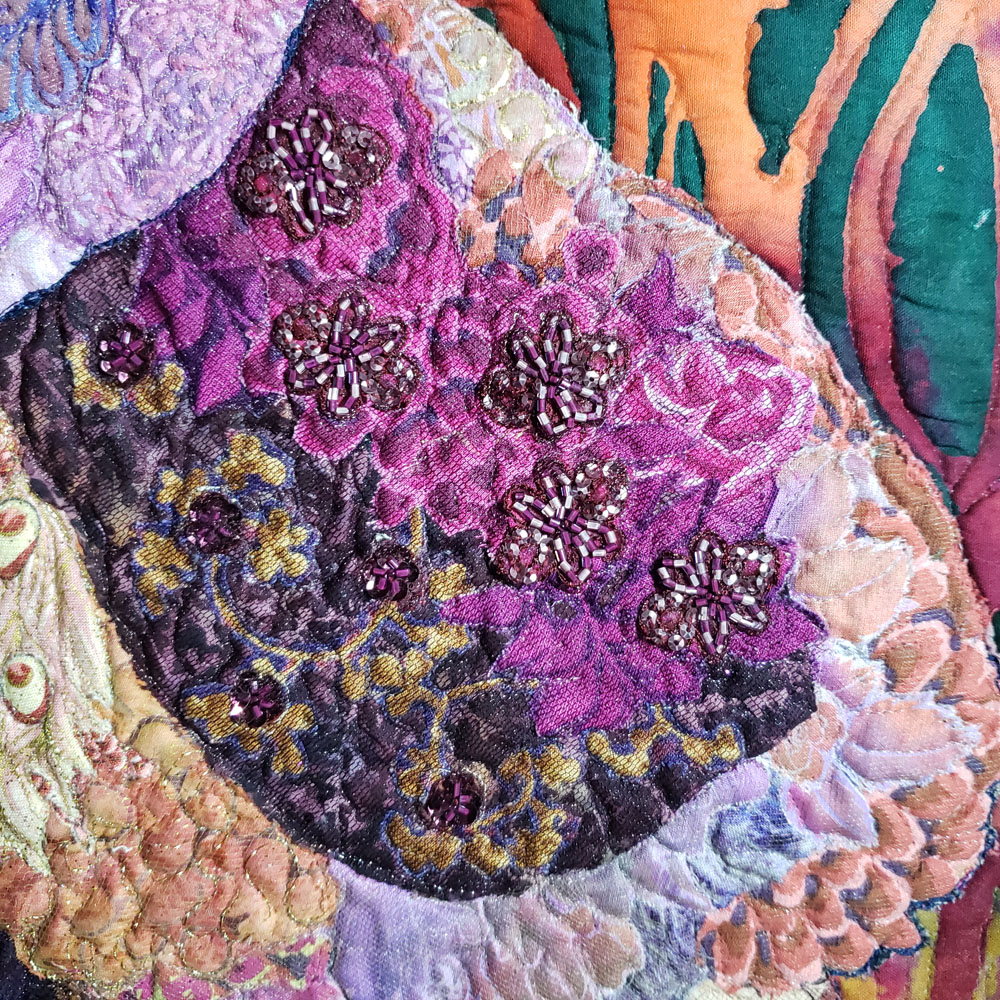
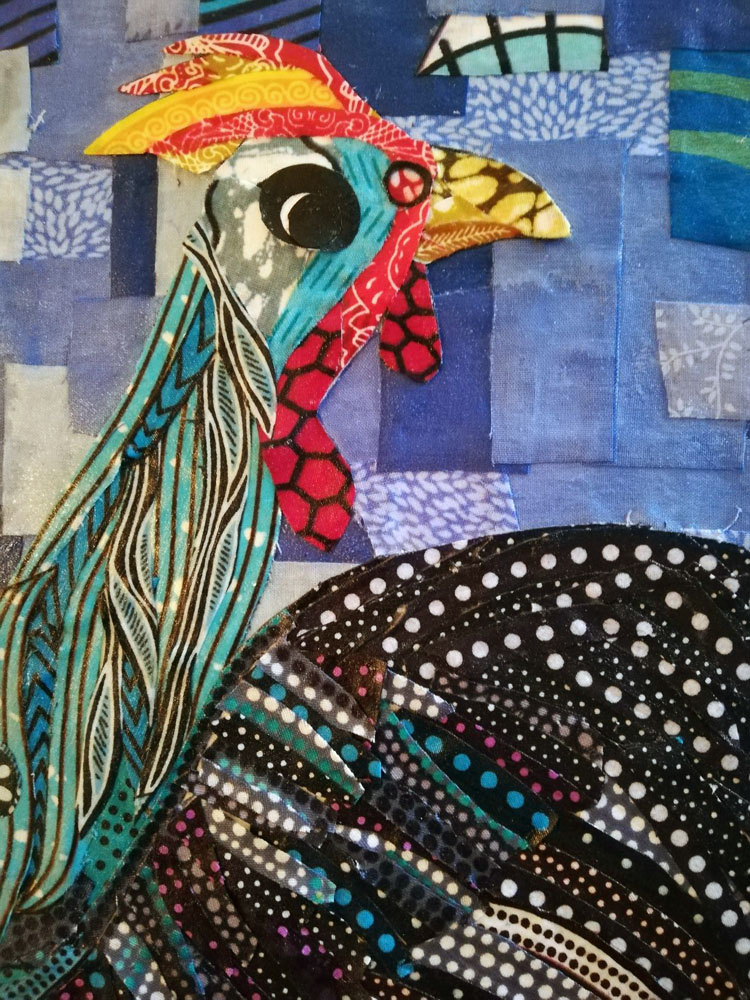
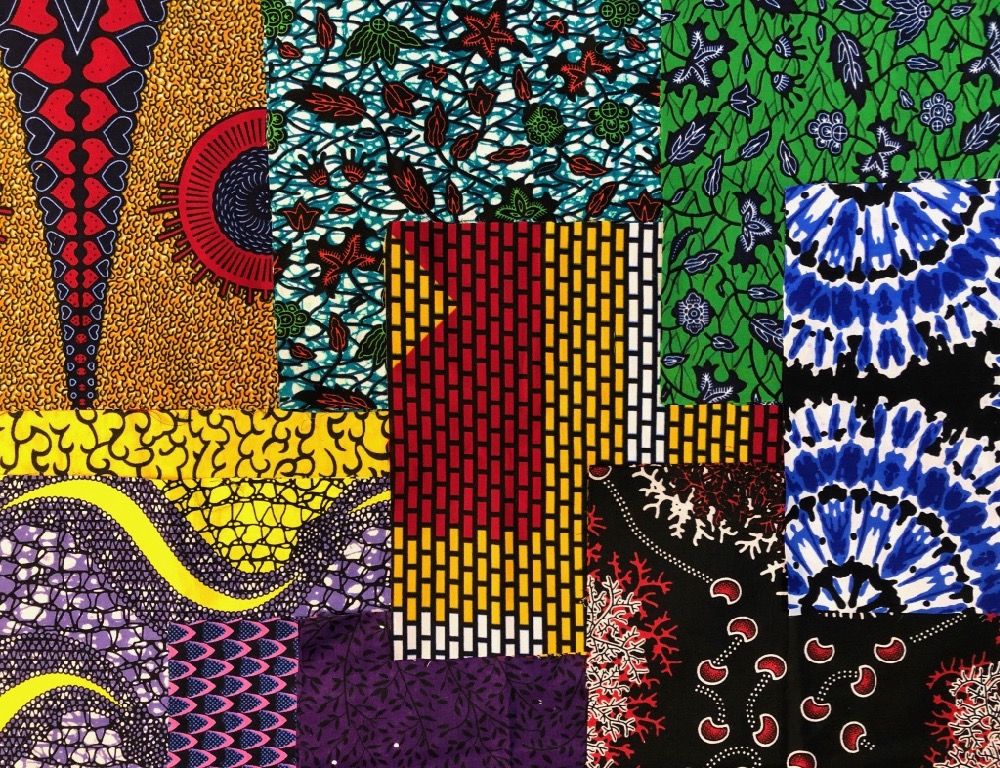


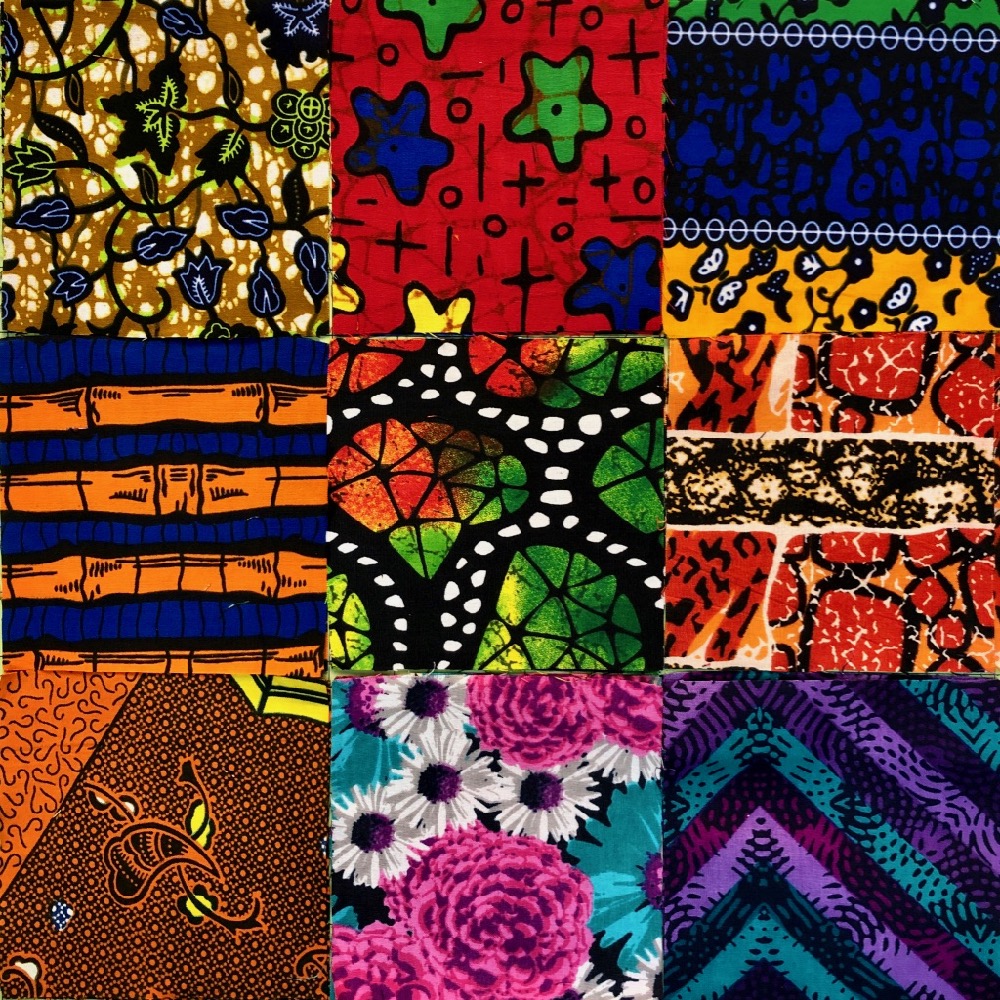












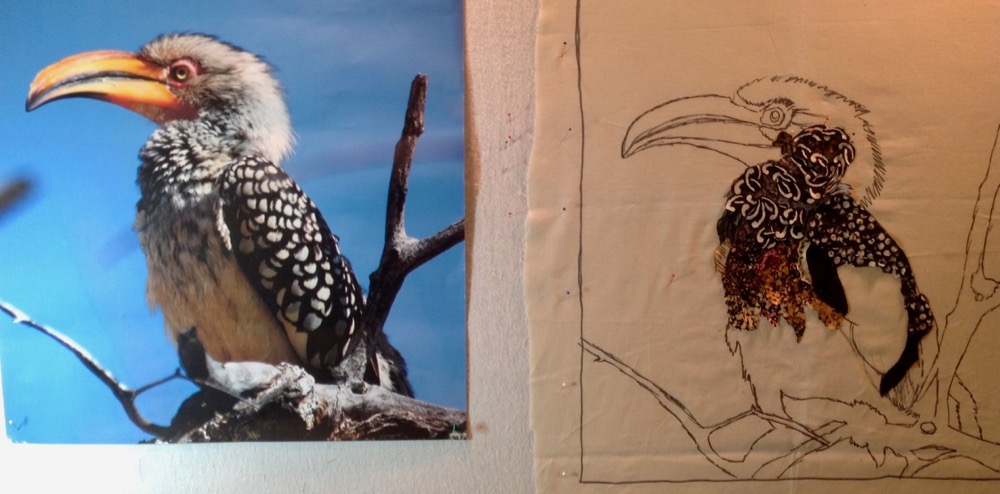


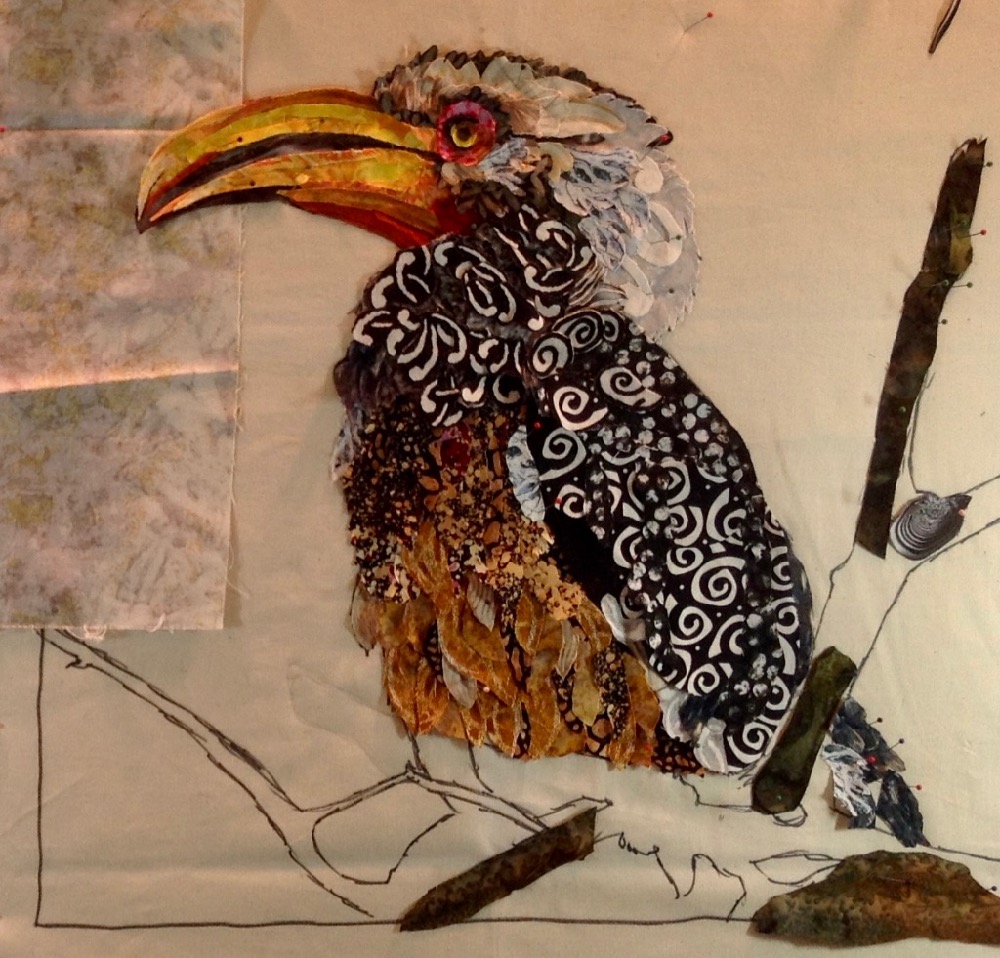




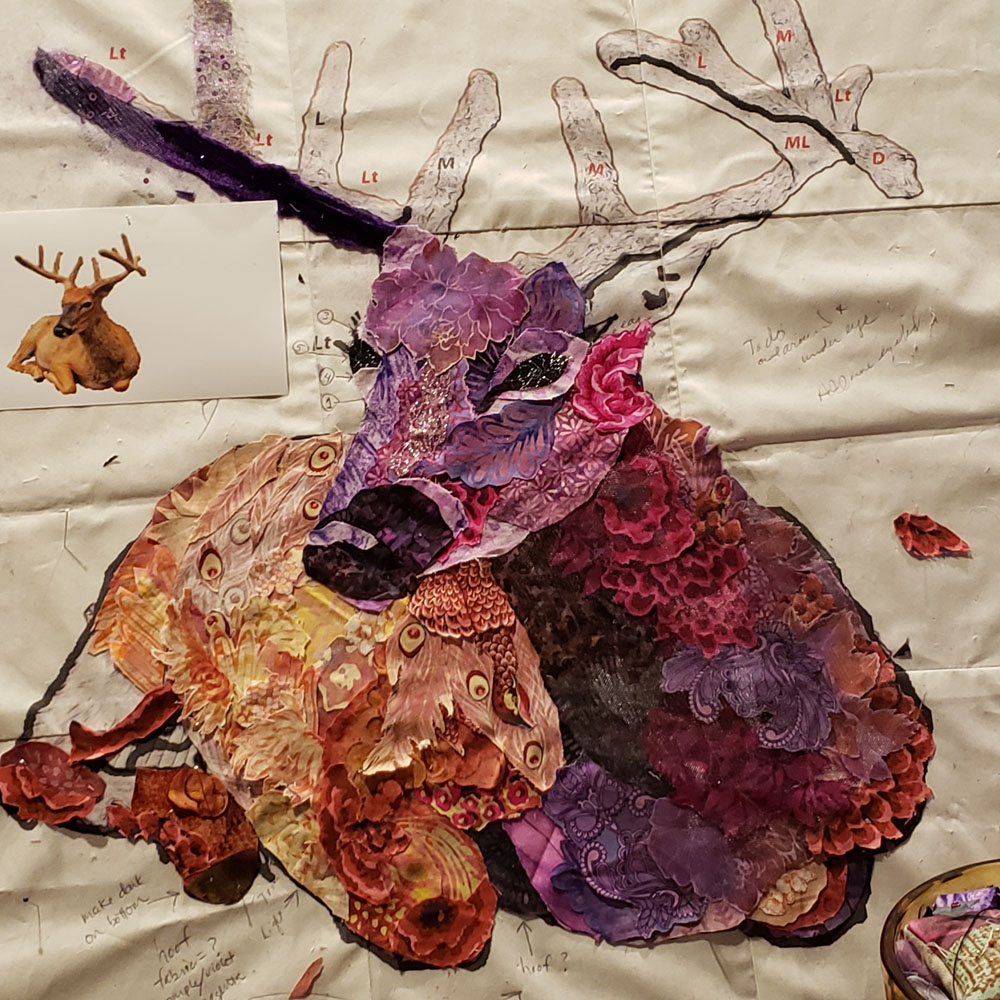
Thank you for the inspiration
Thanks for this post on African fabric use in collage. I signed up for the Summit after your earlier post but have hesitated in ordering the bundle. I guess you have me convinced now. I’m looking forward to the summit opening up a whole new world of quilting delights.
As usual, Susan, there is much to be learned by reading your weekly posts. Thank you.
I’m a friend of Shannon’s and I love that you featured her artwork! She always amazes me with the ways she is able to put fabrics together to create incredible pictures.
Thank you Susan for sharing Linda Baar’s yellow billed hornbill and the lovely South African Sheshwe’s she used. Manufactured by Da Gama Tezxtiles, Zwelitsha, South Africa
Thank you for sharing my first fabric collage piece on your blog site.
It meant a lot to be highlighted during your African fabric week.
I hope more people will discover these beautiful fabrics and be inspired to create with their colors and designs after seeing this post.
I return to Niger next week and look forward to visiting my favorite fabric shop soon after I arrive. ❤️????
It was my pleasure, Shannon! Thank you for sharing your lovely work with all of us. Safe travels and happy shopping!